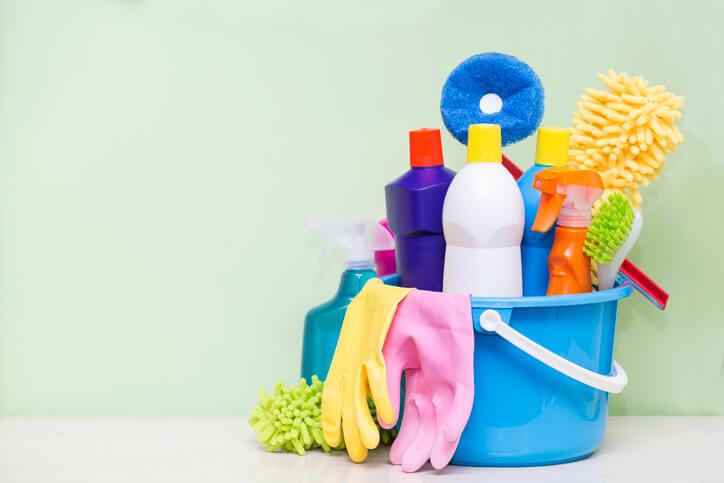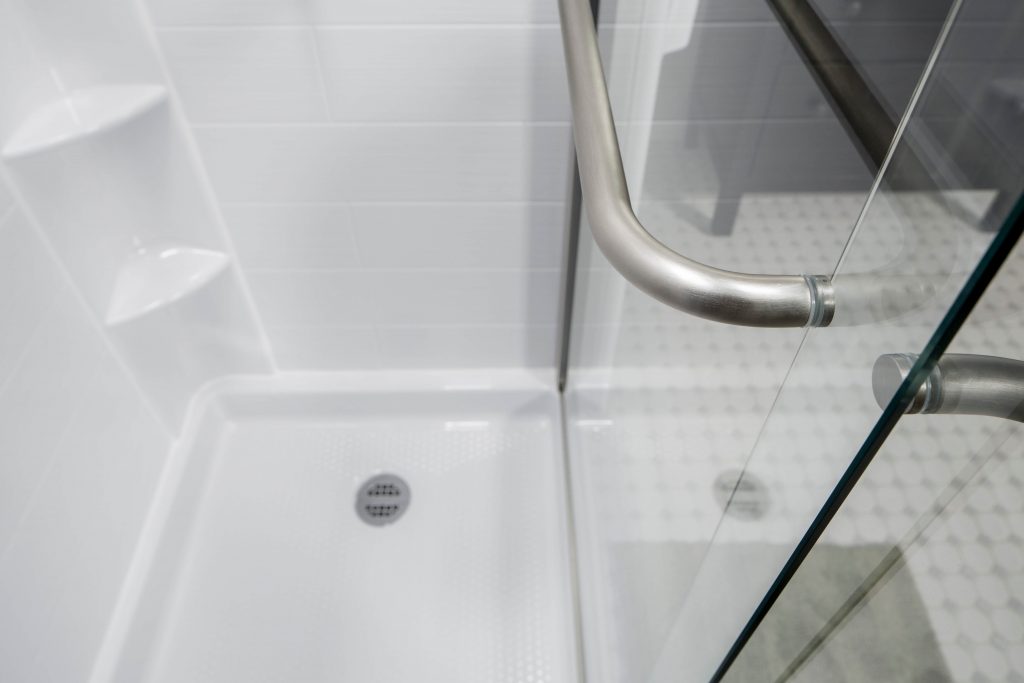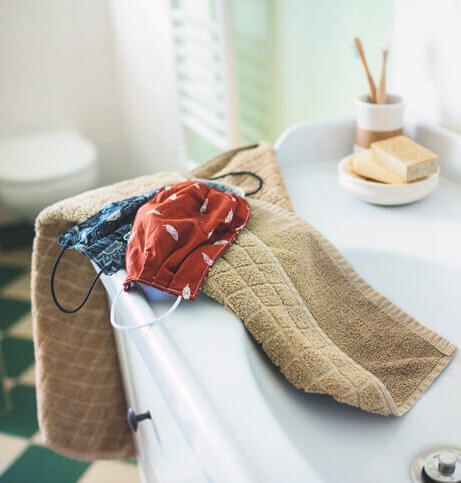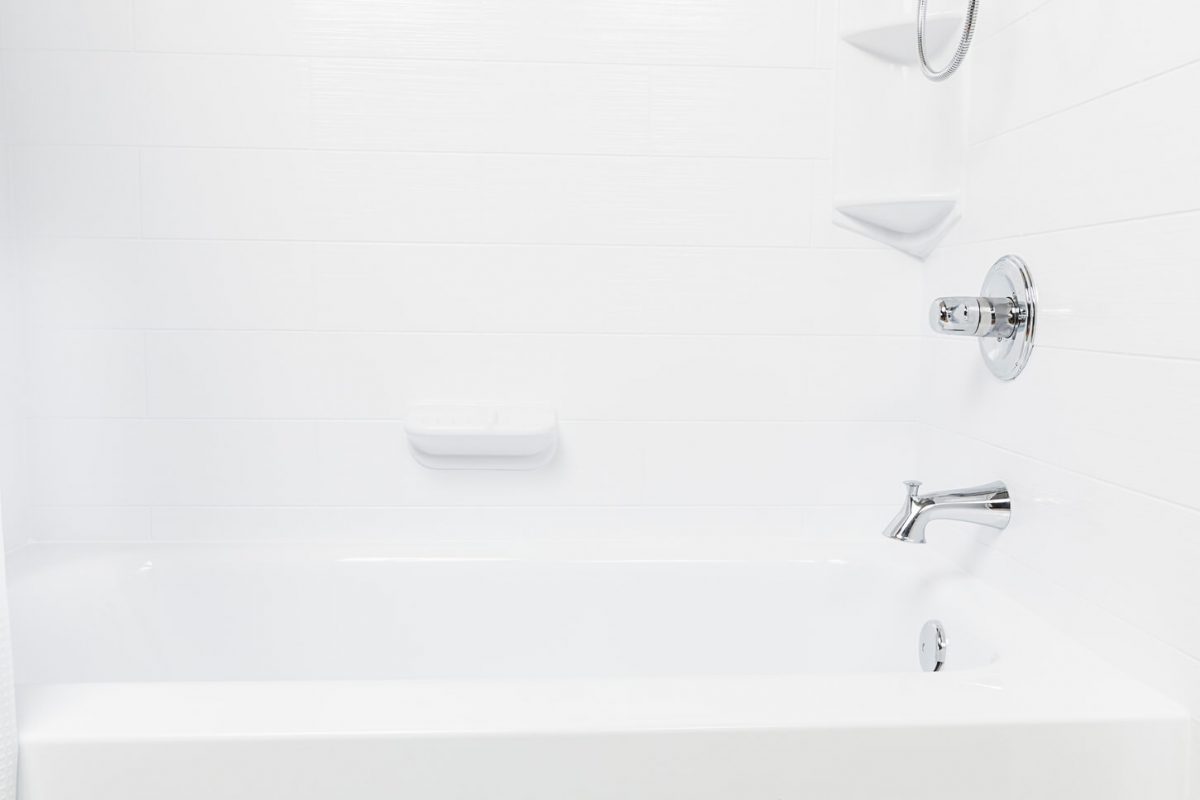The Importance of Bathroom Cleaning

Even though most would not argue against keeping a bathroom tidy, many find it one of the trickiest areas of the house to clean: From bathroom walls and shower tile grout to bathtub and shower basin to toilet and beyond. Not only does each area needs cleaning, it also needs proper sanitization, all while making sure to use the right products so as to avoid damaging any surfaces.
For those of us who choose not to use, or cannot afford using, a bathroom cleaning service, this remains a significant endeavor.
Let’s talk for a moment about why bathroom should be kept clean, and then we’ll take a look at some of the practical aspects to help you get there. Here are some of the top reasons regular bathroom cleaning is important:
Hygiene
Bathrooms are usually a shared space where toothbrushes may be found not too far away from bathroom cleaning supplies, shower, and toilet. Moisture combined with continuous use creates a fertile environment for mold and germs. One way to reduce the risk of contamination is through regular upkeep. Another layer of complexity is cold-and-flu season, which forces us to pay even closer attention to our health and safety.
Maintenance
Having a consistent approach to bathroom cleaning is not only beneficial for your health, it may also help ensure your bathroom remains in good condition longer. Knowing how to keep dirt and grime away, while preserving the luster of surfaces, can help extend the life of bathtubs, shower tiles, and fixtures. This could reduce the need for repair or replacement. This is particularly helpful to know if you have recently remodeled your bathroom or you’re planning on a future remodel.
It’s just nicer!
Bathrooms get multiple visits a day by all members of the household, not to mention visiting family and friends. Don’t miss a chance to create a good impression and make the daily lives of your loved ones that much brighter.
Cleaning vs. Sanitizing vs. Disinfecting

The words “cleaning,” “sanitizing,” and “disinfecting” are often used to indicate different steps in a bathroom cleaning routine. Even though we intuitively understand there is a difference, people often incorrectly use these terms interchangeably.
The distinction boils down to how well you are able to clear surfaces of visible dirt as well as potentially harmful microorganisms, both of which are constantly an issue in the bathroom. The usual suspects are hard-water stains, soap scum, fungi, bacteria, and viruses. It’s important to know how to deal with these and address any issues before they cause harm. Moreover, it’s essential to choose and apply the correct cleaning products.
Cleaning
Cleaning is the process of clearing surfaces of dust, grime and debris. It removes visible dirt, but is usually ineffective against the spread of germs. When you clean you will likely wipe, vacuum, or wash the surfaces using a detergent or water.
Sanitizing
Sanitizing products claim to kill up to 99.9% of bacteria on a surface. When sanitizing, a surface is usually washed with a sanitizing product or cleaned with an antibacterial wipe, which is usually sufficient for most day-to-day applications. Bear in mind that sanitizing is not aimed at cleaning stains or other surface-level dirt.
Disinfecting
Disinfecting takes sanitizing a step further. Disinfectants claim to kill up to 99.999% of bacteria, viruses, and fungi on surfaces. This may be the preferred way to cleaning areas of the home that are particularly prone to germs (e.g. sink drains and toilet bowls), and may help preventing the spread of infectious diseases.
Disinfecting usually involves stronger chemicals and leaving them on surfaces for a suggested period in order to kill germs. Like sanitizing, disinfecting may help eliminating microorganisms, and does not aim to clean the surface-level dirt.
Note: Disinfecting products must be handled with caution and applied following the manufacturer’s recommendations. Do not bring these products in direct contact with skin, mouth, nose, or eyes.
The bottom line is cleaning removes dirt, but does not kill microbes, whereas sanitizing and disinfecting may kill the germs, but won’t necessarily clean dirty surfaces. Thus, a rule of thumb is to clean surfaces and objects first, and then proceed to sanitize or disinfect them.
Note: Make sure to read the cleaning product labels carefully. Some commercially available cleaners combine cleaning and sanitizing / disinfecting properties. Please consult the list of EPA-registered disinfectants for more information, and also be sure to check the list of cleaners safe for use with Bath Fitter products.
Commercial vs. Homemade Bathroom cleaners

The list of bathroom cleaning products available on the market is nearly endless, from basic and inexpensive to professional and hi-tech. There’s a product for pretty much any cleaning job you can think of.
However, many of the same tasks can be tackled using different combinations of ingredients that many of us already have in our homes.
So, which bathroom cleaning products are better, commercial or homemade? It depends on a few things, like how specific the results need to be, your understanding of how to use certain products and ingredients, and your personal preferences (e.g. eco-friendly products). Here are some of the main pros and cons for both commercial and homemade bathroom cleaners to help inform your choice.
Commercial bathroom cleaners
- 1
Pros
Commercial bathroom cleaning products are designed with a particular application in mind. This means that they are both task-specific and surface-specific. Certain surfaces will react to certain chemicals, so the biggest benefit here is that you are provided clear instructions on how and where to use the product effectively without damaging your bathroom.<br><br>Another benefit is that all the ingredients are already mixed and tested for both effectiveness and safety. This eliminates the need to get multiple components by yourself and experiment with proportions, as well as removing the risk of creating potentially toxic combinations of ingredients.
- 2
Cons
Commercial bathroom cleaning products are often more expensive compared to their homemade alternatives. Additionally, not all manufacturers have yet embraced the eco-friendly movement, so we advise that you do your research and try to opt for the greener, less toxic alternatives when possible to reduce potential harm to the environment, yourself, and those around you.
Homemade bathroom cleaners
- 1
Pros
Homemade bathroom cleaning products are often more eco-friendly and cost-effective. They can be an easy replacement for the commercial cleaners when you need to perform a basic cleaning job. You can use common household ingredients like vinegar, hydrogen peroxide, and baking soda, to name a few.
- 2
Cons
Not all ingredients are suitable for use on every surface. Therefore, it’s essential that you do at least basic research before using them in your bathroom. Otherwise, you may be running a risk of causing permanent damage, such as discoloration or corrosion of surfaces over time.<br><br>Furthermore, you need to be cautious about mixing chemicals. You need to use the correct ratios to achieve the desired effect, but more importantly you must have an understanding of which solutions are safe to mix. If you’re feeling uncertain about these things, it may be best to opt for a tried and tested commercial product.
Bathroom Cleaning by Area
How to clean bathroom walls
Bathroom walls often attract a lot of dust, stains, cobwebs, and soap scum. However, the cleaning process is fairly straightforward.
- 1
Remove dust and cobwebs from the surface.
Start cleaning from the top and work your way down. Try to make sure that you have reached every corner. This is easily done using a microfiber dust mop with no additional products. You can either use a regular cleaning mop, or a variation with a long handle. The advantage of the latter is that it allows you to reach higher areas more easily, as well as remove dust and cobwebs from your bathroom ceiling.
- 2
Wash the bathroom walls using a cleaning agent.
The choice of tools and cleaners is going to differ depending on the type of wall material, but the overall process will be similar. First spread the cleaning agent evenly across the entire surface using either a sponge or a spray bottle. Let it sit following the manufacturer’s recommendation to ensure it breaks down the grime. Then scrub the surface clean and rinse thoroughly.
Notes: Examples of some of the most widely used bathroom wall materials are tile, acrylic, and natural stone. When choosing a commercial cleaning product, make sure to pick one suitable specifically for your wall material and read the label carefully before using.
A word of caution
- 1
Do not use abrasive cleaners (including baking soda)
on acrylic surfaces, such as <a href=”/us-en/walls-wainscoting/” target=”_blank” rel=”noreferrer noopener”>Bath Fitter acrylic walls</a>, as it may cause permanent damage. Be sure to refer to the <a aria-label=”undefined (opens in a new tab)” href=”/wp-content/uploads/2020/12/01-English-List-of-household-cleaners-update-December-17-2020.pdf” target=”_blank” rel=”noreferrer noopener”>Bath Fitter approved list of cleaning products</a>
- 2
Do not use acidic cleaning products on natural stone surfaces,
as it may cause erosion over time. Cleaning natural stone walls can be done using specially-formulated stone soap, or stone soap can be replaced with other non-acidic detergents, such as dish soap.
How to clean bathroom tile grout
An easy homemade grout cleaner can be made using only two ingredients: baking soda and hydrogen peroxide. Cover grout with baking soda, then spray with hydrogen peroxide until wet. Let it sit for about 10 minutes, then scrub with a brush and wipe clean.
How to clean the bathroom sink

The sink is another area that can be easily cleaned using a homemade cleaner. Spray the sink with a mixture of dish soap and vinegar. Sprinkle baking soda onto the surface and let it sit for a few minutes. You can use a toothbrush to get into the edges and do the details. Use a microfiber cloth to rub the sink. Wet the cloth and wipe the surface clean, then rinse the remaining cleaner.
How to clean the toilet?
Step One
Spray the toilet with a general bathroom cleaner, making sure the whole surface is covered, from the handle to the lid to the base. Let the cleaner sit for the recommended time specified by the manufacturer.
Step Two
In the meantime, apply the bowl cleaner, making sure to get it right up under the rim. Again, let the cleaner sit to break down the grime.
Step Three
Spray the area around the toilet with enzyme cleaner.
Step Four
Use a paper towel to wipe the entire area that you sprayed. Wipe both the toilet and the base of the toilet. Paper towels are good for cleaning the toilet because they are disposable and allow you to avoid cross-contamination. Use a dedicated toilet brush to scrub the specifically grimy areas, and make sure you don’t use the same brush for other areas.
Step Five
Use a toilet bowl brush to clean inside the bowl and under the rim. The goal is to scrape off any dirt, hard water stains and grime. Start up around the rim and work your way down to the bottom. As with your other toilet-cleaning tools, this must be a dedicated brush that’s never used for other areas. Flush to rinse off the remaining cleaning product.
How to clean the bathtub and shower basin
Step One
Mix dish soap and vinegar in a spray bottle. Be careful with abrasive cleaners, as they are not suitable for all surfaces. So, avoid using abrasives, such as baking soda on acrylic tubs and basins. Also, be sure to use a soft sponge on acrylic surfaces.
Step Two
Spray the entire tub with cleaner and use the sponge to scrub off any stains and soap scum. Rinse thoroughly using either a jug or a shower, if you have a removable shower head. Buff dry with a towel.
How to clean glass shower doors/walls

Spray full-strength vinegar onto the surface. Clean with a soft sponge, and rinse off, then buff the surface with a clean soft cloth for a clean and shiny end result.
Bathroom cleaning during flu season
There are two possible scenarios regarding flu season that will determine how you should proceed with bathroom cleaning.
Nobody in the household has been infected
If nobody has been infected, regular upkeep and sanitizing is enough, provided that other safety measures are taken into consideration.
Someone living in the household is ill
In the event that a household member is ill, the basic measures you need to take are as follows:

- Limit your contact with said person as much as possible.
- If possible, the ill person should use a separate bedroom and bathroom.
- Wear disposable gloves and only clean the area around the person who is sick when needed, e.g. the area is soiled.
- If they feel up to it, the ill person in question can clean their own space.
- Caregivers can provide personal cleaning supplies to the person who is sick (if appropriate). Supplies include tissues, paper towels, cleaners, and EPA-registered disinfectants.
- In case the bathroom is shared, the person who is sick should clean and disinfect after each use. If that isn’t possible, the caregiver should wait as long as possible before cleaning and disinfecting.
How to clean the bathroom if there is a sick person in the house
Regularly clean high-traffic surfaces, including countertops, light switches, doorknobs, cabinet handles, and faucets.
First, clean the area using soap and water. After that, use standard EPA-authorized disinfectants to disinfect the area.
What to consider when working with strong chemicals
- Make sure to read the instructions on the label to see how long you should keep the disinfectant on the surface and how to rinse the chemicals properly.
- Ensure good airflow and ventilation.
Bathroom Cleaning Checklist

- Remove items that are in the way of the areas that you are planning to clean.
- Spray and soak the tiles. To let the product break down the dirt and disinfect the areas, let it sit for the recommended period instructed on the product label
- In the meantime, you may want to survey the inventory of your bathroom “stuff,” tossing and if possible recycling the items you don’t need. Put aside the things that you do need. They’ll have to be cleaned and returned where they belong at a later stage.
- Dust your bathroom, moving from top to bottom.
- Clean the walls.
- Clean the toilet.
- Clean tub and shower areas.
- Clean fixtures and mirrors.
- Clean the items that you have relocated in step one and put them back.
- Clean the floor.
